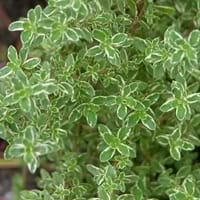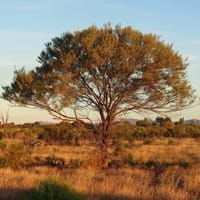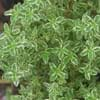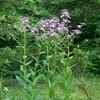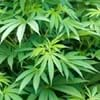Life Span
Perennial
Perennial
Origin
Asia, Europe
Australia
Types
Elfin Thyme, Pink Chintz Thyme, Lime Thyme, White Moss Thyme, Lavender Thyme, Silver Needle Thyme
Not Available
Number of Varieties
Not Available
Habitat
Rocky areas
Scrubs, tussock grasslands, Upland savannas
USDA Hardiness Zone
6-9
10-11
Sunset Zone
1a, 1b, 2a, 2b, 3a, 3b, 4, 5, 6, 7, 8, 9, 10, 11, 12, 13, 14, 15, 16, 17, 18, 19, 20, 21, 22, 23, 24
8, 9, 12, 13, 14, 15, 16, 17, 18, 19, 20, 21, 22, 23, 24
Habit
Cushion/Mound-forming
Upright/Erect
Minimum Width
Not Available
Flower Color
Crimson, Lavender, Pink, White
Lemon yellow
Flower Color Modifier
Unknown
Bicolor
Fruit Color
Not Available
Gray Green
Leaf Color in Spring
Green
Blue Green
Leaf Color in Summer
Gray Green
Blue Green
Leaf Color in Fall
Gray Green
Blue Green
Leaf Color in Winter
Gray Green
Blue Green
Leaf Shape
Tiny
Long Narrow
Plant Season
Summer
Spring
Sunlight
Full Sun, Part sun
Full Sun
Type of Soil
Loamy, Sandy
Loam, Sand
The pH of Soil
Neutral, Slightly Alkaline
Acidic, Neutral, Alkaline
Soil Drainage
Well drained
Well drained
Bloom Time
Fall, Spring, Summer, Winter
Spring, Late Winter
Tolerances
Drought
Drought
Where to Plant?
Container, Ground
Ground
How to Plant?
Seedlings, Stem Planting
Seedlings
Plant Maintenance
Medium
Medium
Watering Requirements
Do not water frequently, Does not require lot of watering, Requires watering in the growing season, Water occasionally
Do not water excessively
In Summer
Lots of watering
Lots of watering
In Spring
Moderate
Moderate
In Winter
Average Water
Average Water
Soil pH
Neutral, Slightly Alkaline
Acidic, Neutral, Alkaline
Soil Type
Loamy, Sandy
Loam, Sand
Soil Drainage Capacity
Well drained
Well drained
Sun Exposure
Full Sun, Part sun
Full Sun
Pruning
Prune for shortening long shoots, Prune if you want to improve plant shape, Prune lower leaves, Requires extensive pruning
Remove dead or diseased plant parts, Requires little pruning
Fertilizers
All-Purpose Liquid Fertilizer
All-Purpose Liquid Fertilizer, No fertilizers needed
Pests and Diseases
Alternaria leaf blight, Aphids, Botrytis collar rot, Rhizoctonia Root Rot, Spider mites
Insects, Root rot
Plant Tolerance
Drought
Drought
Flower Petal Number
Not Available
Single
Fragrant Bark/Stem
Yes
No
Foliage Texture
Fine
Fine
Foliage Sheen
Matte
Matte
Attracts
Butterflies
Butterflies
Allergy
Diarrhea, Skin irritation
Asthma, Eye irritation, Headache, Nose Irritation, Throat itching, Vomiting
Aesthetic Uses
Beautification, Showy Purposes, Used for decorating walls, fences, gates, hedges, etc.
Showy Purposes
Beauty Benefits
Not Available
Not Available
Environmental Uses
Air purification
Air purification, soil stabilisation
Medicinal Uses
Arthritis, Bronchitis, Chronic fatigue, Cough, Gastritis, Hair Loss, Insomnia, Kidney problems, Muscle Pain, Skin irritation, Snoring, Sore throat, Stomach pain, Swelling
Not Available
Part of Plant Used
Whole plant
Flowers, Sap, Seeds
Other Uses
Air freshner, Cosmetics, Economic Purpose, Employed in herbal medicine, Oil is used in perfume, soaps, creams, etc., Showy Purposes, Used As Food, Used as Ornamental plant, Used for fragrance
Used as a dye, Wood is used fore making tools
Used As Indoor Plant
Yes
No
Used As Outdoor Plant
Yes
Yes
Garden Design
Container, Edible, Herb, Rock Garden
Shade Trees, Street Trees
Botanical Name
Thymus vulgaris
ACACIA aneura
Common Name
Thyme
Mulga, True Mulga
In Hindi
अजवायन के फूल
Mulga
In Portuguese
Tomilho
Mulga
Phylum
Magnoliophyta
Magnoliophyta
Class
Magnoliopsida
Magnoliopsida
Order
Not Available
Fabales
Clade
Not Available
Angiosperms, Eudicots, Rosids
Tribe
Not Available
Not Available
Subfamily
Not Available
Not Available
Number of Species
Not Available
Season and Care of Thyme and Mulga Tree
Season and care of Thyme and Mulga Tree is important to know. While considering everything about Thyme and Mulga Tree Care, growing season is an essential factor. Thyme season is Summer and Mulga Tree season is Summer. The type of soil for Thyme is Loamy, Sandy and for Mulga Tree is Loam, Sand while the PH of soil for Thyme is Neutral, Slightly Alkaline and for Mulga Tree is Acidic, Neutral, Alkaline.
Thyme and Mulga Tree Physical Information
Thyme and Mulga Tree physical information is very important for comparison. Thyme height is 10.20 cm and width Not Available whereas Mulga Tree height is 550.00 cm and width 370.00 cm. The color specification of Thyme and Mulga Tree are as follows:
Thyme flower color: Crimson, Lavender, Pink and White
Thyme leaf color: Green
Mulga Tree flower color: Lemon yellow
- Mulga Tree leaf color: Blue Green
Care of Thyme and Mulga Tree
Care of Thyme and Mulga Tree include pruning, fertilizers, watering etc. Thyme pruning is done Prune for shortening long shoots, Prune if you want to improve plant shape, Prune lower leaves and Requires extensive pruning and Mulga Tree pruning is done Remove dead or diseased plant parts and Requires little pruning. In summer Thyme needs Lots of watering and in winter, it needs Average Water. Whereas, in summer Mulga Tree needs Lots of watering and in winter, it needs Average Water.
